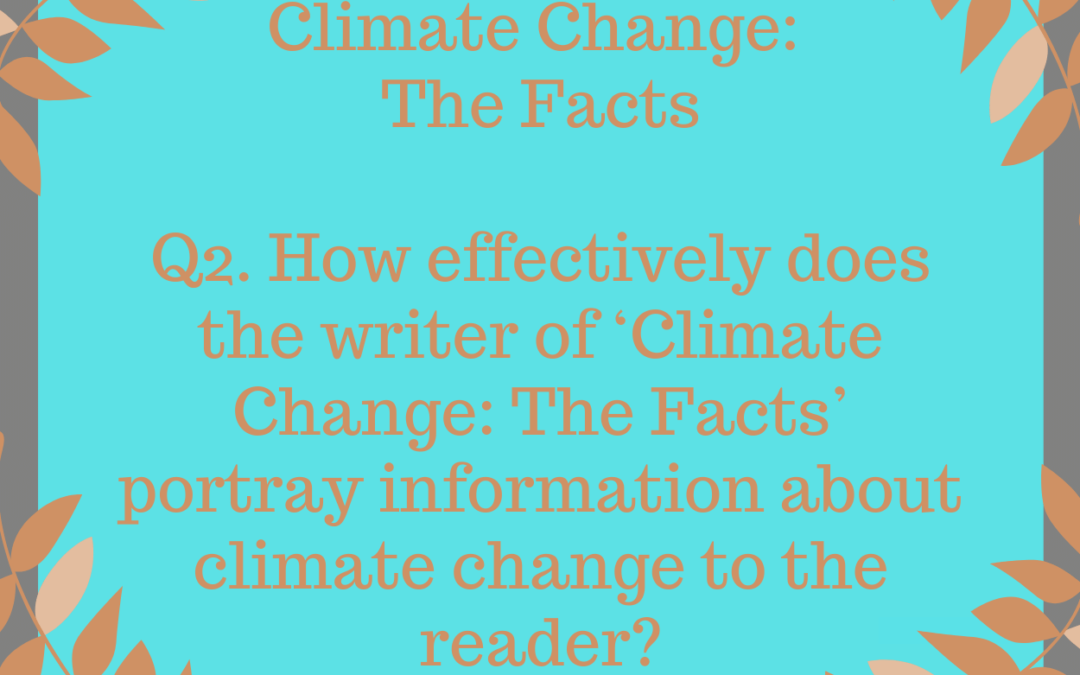Edexcel English IGCSE: Climate Change: The Facts
Q2. How effectively does the writer of ‘Climate Change: The Facts’ portray information about climate change to the reader?
In your answer, consider:
- the layout of the article;
- the use of pictures and diagrams;
- the writer’s use of language.
You should refer closely to the passage to support your answer. You may use brief quotations.
Edexcel English IGCSE Model Essay by an Expert
The intended audience of this article is people who do not know a lot about climate change. In this article, the writer conveys complex information in an accessible way, using a clear layout, helpful images, and conversational language.
The layout of the article is designed to enable to reader to take in as much information as possible. The headline is large and in bold font, which makes it stand out. Although rather long, it contains information about the content of the article. The questions foreshadow the use of questions as subheadings throughout the text, and also introduces the conversational tone of the article, which is enhanced by the fact that the questions begin with connectives (“but” and “and”). The main text is divided into short sections, and each paragraph contains only a few sentences. This allows the reader to skim-read the text easily, and jump to the parts which they will find most interesting. By making the text visually easy to read and follow, the author effectively portrays the content of the article.
The use of images also enhances the portrayal of information about climate change. Bright primary colours attract the reader’s attention, making them more likely to examine the diagrams. The use of the colours yellow and red, which are associated with danger, also reinforce the message in the text that climate change could have disastrous effects. The diagrams have several features which allow the information to be portrayed effectively, for example the use of arrows and numbered steps. The language on the diagrams is brief and simple; it is designed to inform, so no unnecessary vocabulary is used. The graphs provide visual representations of complex statistics. In the left-hand graph, for instance, the use of large numbers and visual division of percentages helps the reader to visualise the gas emissions.
The writer’s use of language is the most effective tool in portraying scientific information to a non-expert audience. Throughout the passage, the writer combines technical terms with colloquial language, in order to make the information accessible for an audience who may not necessarily understand technical descriptions. For example, when discussing greenhouse gases, the writer adds colloquial and even humorous explanations of more complex terms: “livestock farming (farting cows) and paddy farming (rotting vegetation)”. Similarly, non-scientific language is used to describe scientific phenomena, with words such as “burping” instead of scientific jargon. Idiomatic language is also used to keep the tone conversational, such as “nasty sting in its tail”, “sky high” and “hot potato”. This informal tone avoids the article becoming inaccessibly technical, thus effectively portraying the information to the reader.
In conclusion, the writer effectively portrays information about climate change to the non-expert audience by ensuring that the layout is easy to read, that the images enhance understanding of the content, and that the language isn’t too technical and heavy.



